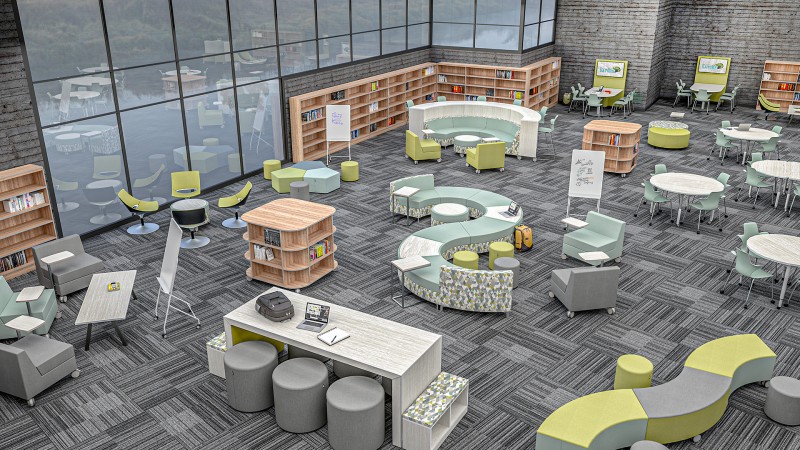Whether you are responsible for developing a new space or renovating an existing one, designing, planning, and purchasing can seem overwhelming. Libraries and learning commons can be particularly challenging. Here are 5 things to think about as you consider your needs for your library or learning commons:
1 .What are the primary activities that will take place in this space?
How can the design and furniture best serve the needs of those participating in those activities and using the space? How can the space be maximized to serve the needs of the school and as many of the school community members as possible?
2. Think about creating ‘zones’ and using your furniture to help define the zones.
For example, you may wish to have a quiet reading zone, a collaboration zone, an active learning zone, and more. Each zone can potentially be used for multiple activities. Choose furniture that is mobile so that the space can be reconfigured as needs change or activities warrant.
3. Try to avoid thinking about the space as it is and instead try to imagine what it could be.
None of us have a crystal ball but given the recent, rapid changes to curricula, learning theory, and technology, it is a certainty that the spaces we need now may not be the ones we need 5 or 10 years from now. Consider creating a space that can be flexible to accommodate changes in education in the years to come. Some key ideas: incorporate technology, charging stations, mobile tables that can be grouped for larger meetings, lots of soft places to sit – either for quiet reading or comfortable collaboration, and sound-proofed pods for a few people to chat without disrupting the rest of the room.
4. 21st century learning spaces focus on flexibility and individual accommodation.
In a 21st century classroom, students are provided with multiple seating options, different height seats and desks, furniture that provides the freedom to move and the opportunity to choose. Those qualities can be transferred to the library space as well. Assume that the library will be used for collaboration, quiet reflection, meetings, alternate teaching space, but may also be used for creative activities, computer/tablet work and more.
5. What about books?
Without question, technology is changing the way students access information. Most schools don’t need shelving for encyclopedias anymore. That said, we love our books…. How many books will remain in the space? How will they be used? Do they need to be displayed? Think about books now and 5 years from now. The answers may be different and may impact your library design.
If you would like to learn more about planning and furniture for libraries, learning spaces, and common areas, contact Brezach Solutions. We’ll help you create your space.
Brezach
Weird name – Great service

